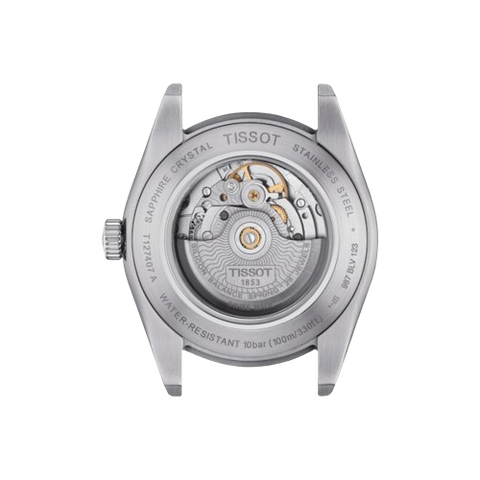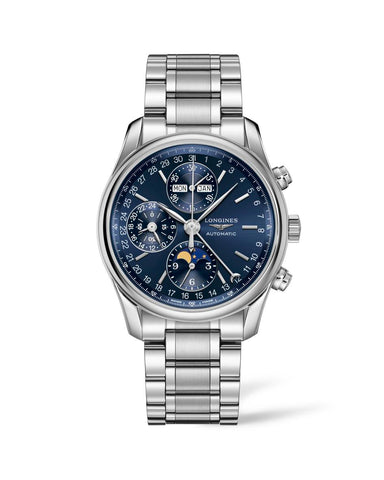The Watch Buyer's Dictionary
Watches are a valuable investment in jewelry, particularly since many individuals wear watches regularly. While you might think, “I don’t need a watch because I have a phone,” watches go beyond time-telling; they reflect one’s style and status. Some argue that a person’s watch can reveal much about them.
Typically, individuals have three types of watches: a sports watch, an everyday timepiece, and one for special occasions such as weddings or fancy evenings out. Shopping for a special occasion watch or an elegant daily watch can be daunting, as the world of watches has its own jargon. To assist you in your next watch purchase, we’ve created a watch buyer’s dictionary, explaining all the relevant terminology.
Automatic Watch
Back in the day, you used to have to physically wind your watch in order for it to keep running. Technology, however, has obviously advanced since then. An automatic watch winds itself by the movement of your wrist and arm.
Bezel
The bezel is the metal piece that surrounds the crystal that covers the face of the watch. On dive watches, the bezel can rotate for timing or other measurements.
Chronograph
A chronograph is a watch that features a stopwatch function in addition to the normal function of telling time. Chronographs can be either quartz (battery-operated) or mechanical, operated by buttons on the side of the case.
Chronometer
Everyone knows Switzerland for their history with watches and they are still highly regarded in the watch industry. A chronometer is a watch that has been certified by the Official Swiss Chronometer Testing Institute.
These watches undergo rigorous tests to measure the accuracy of the watch when exposed to different environments and temperatures. Mechanical watches must be accurate within a range of -4/+6 seconds per day and quartz watches must be accurate within a range of +/-0.07 seconds per day.
Complication
A complication is any function of the watch that goes beyond telling the time. This could include a stopwatch (chronograph), calendar or even a moon phase indicator. The more complications, the more difficult the watch is to make and therefore, the more expensive it will be.
Crown
The crown is the small knob on the side of the case that is used to set the time. In a mechanical watch, the crown is the piece you would wind to keep the watch running.
Crystal
Crystal is the clear cover that covers and protects the face of the watch. Despite its name, it can be made from either glass, acrylic or synthetic sapphire. Synthetic sapphire is the most expensive to make, but it’s much more durable and scratch-resistant compared to the other crystal materials.
Exhibition Case Back
Also known as an open case back, an exhibition case back is a transparent piece on the underside of the watch that reveals the inner mechanics of the watch.

Frequency
Frequency is the rate at which the watch ticks, measured in hertz or vibrations per hour. High-end contemporary watches beat at 4Hz.
Jewels
Jewels are synthetic gemstones like rubies and sapphires used as bearings to reduce friction between the moving parts to increase the longevity of the watch.
Movement
The movement of a watch is the inner workings that can either be mechanical (automatic or hand-wound) or quartz (battery-operated). Switzerland is still a main manufacturer of high-end movements, both quartz and mechanical.
Power Reserve
Once the watch is wound, the power reserve is the amount of time the watch will run. The more high-end the watch, the larger its power reserve. Most entry-level watches can run for about 40 hours.
Quartz
A quartz watch is one powered by batteries. The battery sends an electric signal via a microchip circuit to a small quartz crystal that then vibrates at a precise rate, powering the watch hands. Quartz watches are less expensive and more accurate than mechanical watches, however, watch enthusiasts still tend to favour mechanical watches due to their complexity.
Skeleton
Similar to an exhibition case back, a skeleton exposes the inner workings of the watch.

Tourbillon
The tourbillon is an internal component of a watch that is housed in a rotating cage meant to counter the negative effects of gravity on the movement.
This movement was originally designed for pocket watches but is now showcased in wristwatches to demonstrate the height of their skills.
Winder
A winder is a box or watch case that gently rocks back and forth to wind automatic watches while they are not being worn.
—
Watches make great gifts for both men and women and come in a wide range of prices. If you ever have any questions or need advice on what watch would be the best accessory for your everyday life, stop by J.H. Young in Brantford, we are always happy to help!





